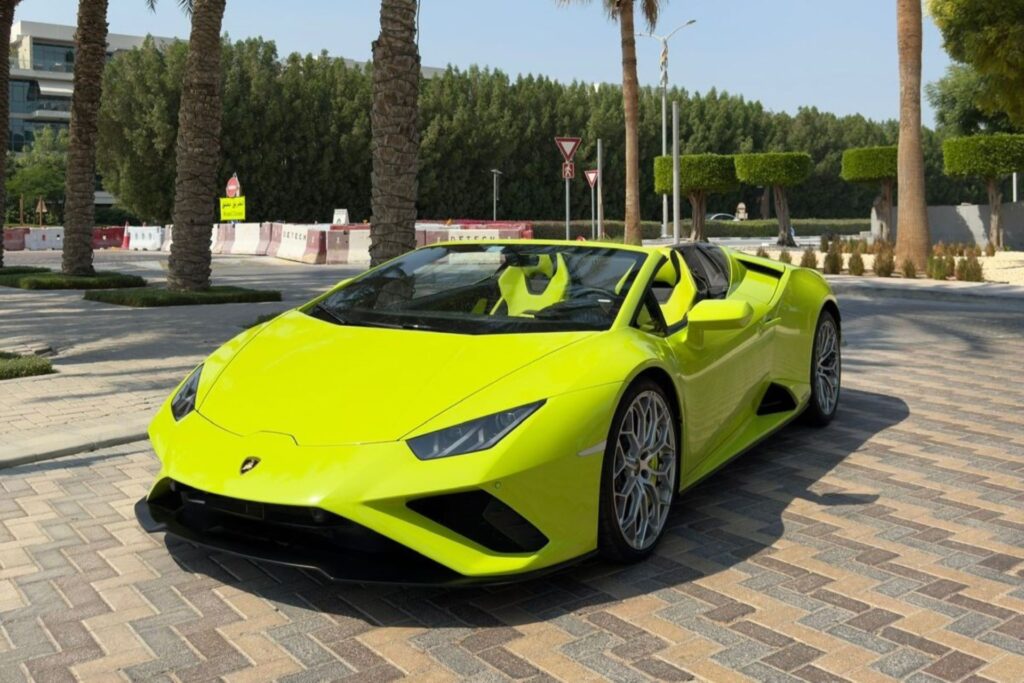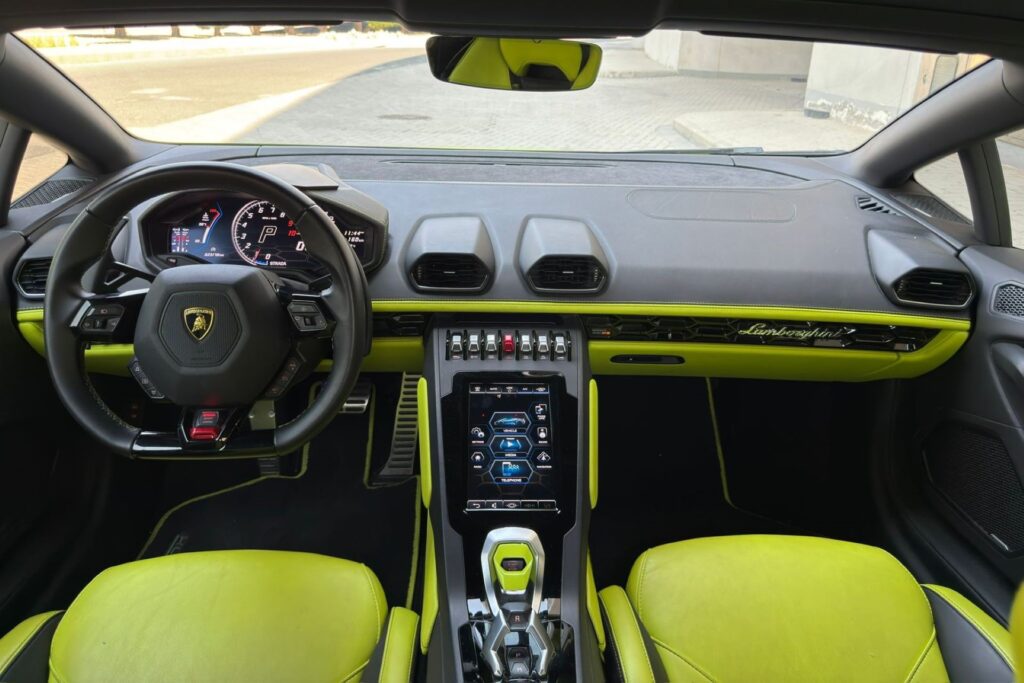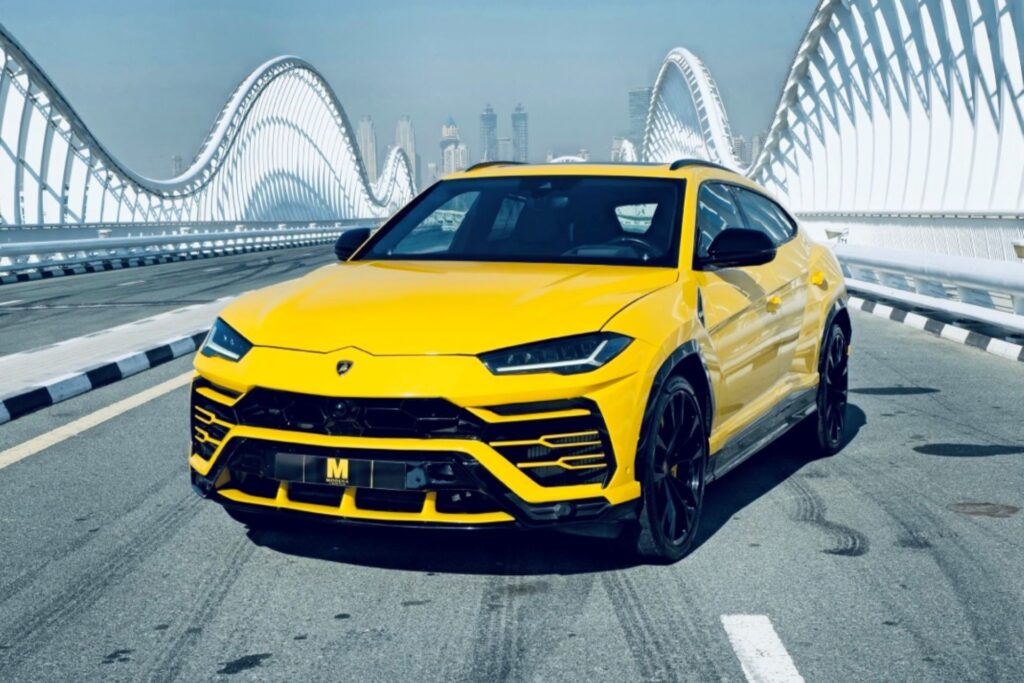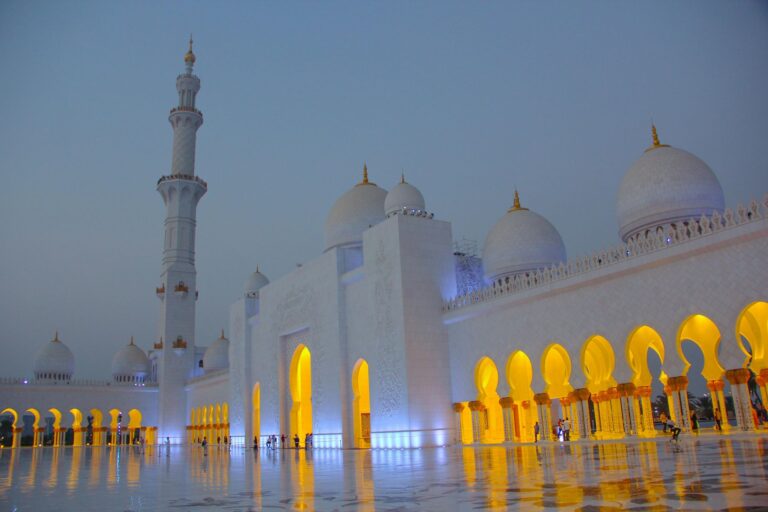What is the history of the Lamborghini brand? It is a story that begins not on a race track, but in a field. Many associate this Italian legend exclusively with aggressive supercars, but its roots lie in the production of agricultural machinery. It is a fascinating journey from a mechanic’s workshop to the showrooms of the world’s most expensive cars. Find out how one man’s wounded pride led to the creation of an empire that challenged Ferrari itself.

Ferruccio Lamborghini – mechanic, soldier, visionary
Before supercars were created, Ferruccio Lamborghini built his life in grease and field conditions. He was born into a family of grape growers, but farming never appealed to him. His true passion was mechanics. During World War II, he ended up on the Greek island of Rhodes, where he served as an aircraft mechanic. It was there, in the absence of spare parts, that he learned to improvise and create “something out of nothing.” These skills proved crucial after his return home.
In post-war Italy, there was a shortage of everything, but agriculture had to continue. Ferruccio came up with a brilliant idea. He bought military trucks from the demobilization and converted them into Lamborghini tractors. He used cheap British Morris engines. To make them economical, he developed an innovative fuel atomizer. The device allowed the engine to start on gasoline and then switch to much cheaper diesel.
Lamborghini Trattori quickly became a powerhouse. The reliable and inexpensive machines made the founder a huge fortune. He soon expanded his business to include the production of air conditioning and heating systems. The wealthy entrepreneur could afford to fulfill his dreams of fast cars. His garage was filled with Jaguars, Mercedes, and Maseratis. However, none of them were perfect.

Clash of the Titans – why did Lamborghini start manufacturing cars?
The most important turning point came in the early 1960s. The Ferrari-Lamborghini conflict is now legendary, but its origins were purely technical. Ferruccio purchased a luxury Ferrari 250 GT, but the car caused constant problems. The clutch failed too often for a car of this class. The Italian industrialist, who knew a thing or two about mechanics, ordered his employees to dismantle the faulty part.
The result of the examination was shocking. It turned out that the sports car was fitted with exactly the same clutch as his tractors. The only difference was the price – the one in the Ferrari was ten times higher. The enraged customer decided to get to the bottom of the matter. He went to Modena to talk to Il Commendatore.
The meeting between Enzo Ferrari and Lamborghini was heated. When Ferruccio pointed out the design flaws, he heard words that changed history: “Lamborghini, you may know how to drive a tractor, but you will never learn how to properly operate a Ferrari.” This insult became the spark that ignited the fire. Instead of returning to the vineyard, the ambitious engineer decided to build his own car. One that would be better than the Maranello products in every way. This is how the history of Lamborghini began.
The birth of a legend – the 350 GTV and early successes
Ferruccio did not mince his words. In 1963, in Sant’Agata Bolognese, the heart of Italy’s “Motor Valley”, he founded Automobili Ferruccio Lamborghini. His approach was pragmatic and ruthless. He poached the best engineers from the competition, including the brilliant Giotto Bizzarrini, creator of the Ferrari V12 engine.
The first result of their work was the Lamborghini 350 GTV prototype. The vehicle impressed with its lines, but it hid a secret. The V12 engine turned out to be too tall and did not fit under the sleek hood. The Turin Motor Show was approaching, so there was no time for corrections. A daring step was decided upon. During the premiere, the engine compartment was filled with bricks to weigh down the front, and the hood was sealed. None of the delighted audience noticed.
The production version, known as the first Lamborghini car – the 350 GT model, went into production a year later. This time, everything worked perfectly. The car was faster, more comfortable, and better made than its competitor, Ferrari. Sant’Agata Bolognese became a new important point on the automotive map of the world. The brand quickly gained recognition among the wealthy looking for an alternative to the familiar “prancing horse”.

The golden age and design revolution – Miura and Countach
However, the real revolution came in 1966. That was when the Lamborghini Miura saw the light of day, its story sounding like something out of a movie script. Engineers worked on it after hours, keeping it secret from their boss, who preferred comfortable GT cars. However, when he saw the design, he gave it the green light. It was the first production supercar with a powerful V12 engine located centrally, just behind the driver’s back.
The Miura shocked not only with its performance, but also with its appearance. The body, designed by Marcello Gandini from the Bertone studio, resembled a sculpture. This car defined the concept of a “supercar.” Another milestone was the model presented in 1974. The Lamborghini Countach looked like a spaceship that had landed on the road.
Sharp edges, a futuristic silhouette, and distinctive upward-opening doors (known as scissor doors) became the brand’s hallmark. Lamborghini’s designers created a poster dream for an entire generation. The Countach was uncompromising, loud, and difficult to drive, but that’s exactly why fans loved it. These two models cemented the company’s position as a manufacturer of cars for bold individualists.
Where did the Lamborghini logo and bull names come from?
You have probably noticed that most of the brand’s models have names associated with bullfighting. This is no coincidence. When considering the meaning of the Lamborghini logo, we must go back to the founder himself. Ferruccio was a Taurus. This animal perfectly reflected his character: strength, stubbornness, and a tendency to attack.
Another source of inspiration was a visit to the Spanish ranch of Eduardo Miura, a famous breeder of fighting bulls. The Italian entrepreneur was so impressed by the majesty of these animals that he made the fighting bull his emblem. The Lamborghini logo also had another dimension – it was a direct counterpoint to the black horse of Ferrari.
The names of Lamborghini models pay homage to the world of bullfighting. Miura took its name from the aforementioned breeder. Islero was the bull that killed the famous matador Manolete in 1947. Diablo, Murciélago, and Gallardo are the names of other legendary animals that have gone down in the history of bullfighting. An interesting exception is Countach. This word does not mean bull, but rather an exclamation of delight and surprise in the local Piedmontese dialect (something like “oh my god!”).
Lean years – bankruptcies and changes of ownership
Despite spectacular launches, the company did not always prosper. The 1970s brought a deep crisis for Lamborghini. The global fuel crisis caused demand for fuel-guzzling beasts to drop dramatically. In addition, Italy was rocked by labor strikes. The situation became so difficult that Ferruccio had to sell his beloved agricultural tractor division to rival company SAME.
Soon after, discouraged by constant problems, he sold his shares in the car factory and retired to his vineyard in Umbria. A whirlwind of changes began. Many wonder who owned Lamborghini during that period. The company changed hands several times. It was managed by Swiss investors, and in 1987 it was taken over by an American giant.
The Lamborghini Chrysler episode brought the Diablo model, but the cultural differences between corporate Detroit and Italian craftsmen were too great. In 1994, the brand was bought by the Indonesian Megatech group. The lack of financial stability and a clear vision for development meant that the future of the Sant’Agata legend hung in the balance. The quality of the cars at that time left much to be desired.
A new era under the wing of Audi (Volkswagen Group)
True stabilization and renaissance came in 1998. That was when Audi took over the brand. The Germans approached the matter with great respect, but also with iron consistency. They combined Italian temperament and design with German technology and precision engineering. It was an explosive mixture that saved the bull from collapse.
The first fruit of this collaboration was the Murciélago, and the smaller Gallardo model proved to be a real sales hit. Thanks to the technological support of the Volkswagen Group, the cars became reliable and suitable for everyday use. Current Lamborghini models continue this philosophy. The launch of the Lamborghini Urus, a super SUV, was a huge success, doubling annual sales.
The brand is also looking boldly to the future as it enters the era of electromobility. The latest designs, such as the Revuelto, are advanced plug-in hybrids. They retain the characteristic V12 sound but meet stringent emission standards. Audi has proven that it is possible to preserve the soul of a brand while making it a profitable business.
Want to experience the power of a supercar? Rent a Lamborghini in Dubai!
FAQ – Frequently asked questions about the history of the brand.
Does Lamborghini still manufacture tractors?
Yes, tractors with the bull logo are still being produced and are valued in agriculture. However, they are manufactured by a completely different company – Lamborghini Trattori, part of the SDF group. The two companies went their separate ways in the 1970s.
How old is Lamborghini?
The automotive division (Automobili Lamborghini) was founded in 1963. It is therefore easy to calculate that the brand has over 60 years of experience in building supercars.
Who is the current owner of Lamborghini?
Since 1998, the sole owner has been the German company Audi AG, which in turn is part of the Volkswagen Group.




